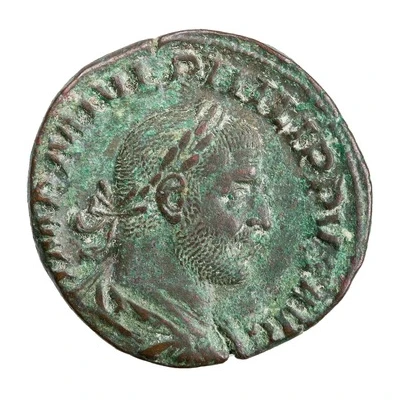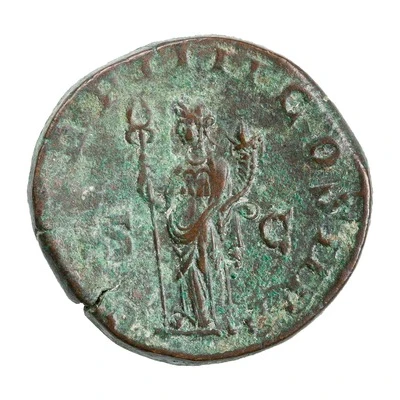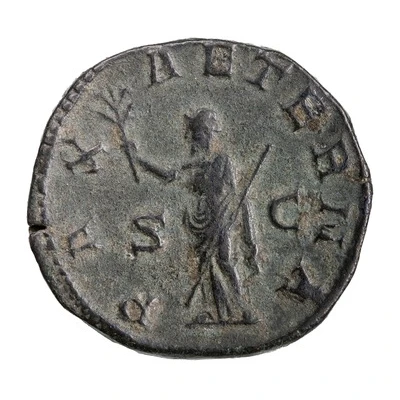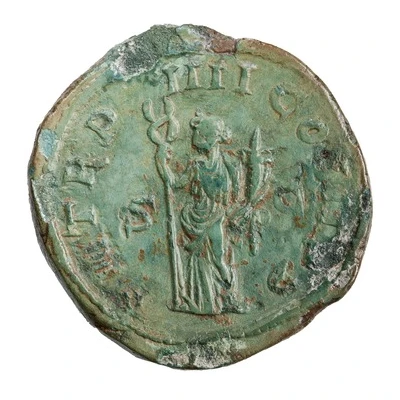


© American Numismatic Society (ANS)
Sestertius - Philippus I P M TR P IIII COS II P P S C; Felicitas
| Bronze | 19.7 g | 29 mm |
| Issuer | Rome › Roman Empire (27 BC - 395 AD) |
|---|---|
| Emperor | Philip I (Marcus Iulius Philippus) (244-249) |
| Type | Standard circulation coin |
| Years | 247-249 |
| Value | Sestertius (⅛) |
| Currency | Antoninianus, Reform of Caracalla (AD 215 – 301) |
| Composition | Bronze |
| Weight | 19.7 g |
| Diameter | 29 mm |
| Shape | Round (irregular) |
| Technique | Hammered |
| Orientation | Variable alignment ↺ |
| Demonetized | Yes |
| Updated | 2024-10-05 |
| Numista | N#282254 |
|---|---|
| Rarity index | 97% |
Reverse
Felicitas, draped, standing left, holding long caduceus in right hand and cornucopiae in left hand.
Script: Latin
Lettering: P M TR P IIII COS II P P S C
Translation:
Pontifex Maximus, Tribunicia Potestate Quarta, Consul Secundum, Pater Patriae. Senatus Consultum.
High priest, holder of tribunician power for the fourth time, consul for the second time, father of the nation. Decree of the senate.
Comment
Mass varies: 16.447–24.73 g;Diameter varies: 27.74–30.3 mm;
Example of this type:
American Numismatic Society (ANS)
Source:
Online Coins of the Roman Empire (OCRE)
Interesting fact
One interesting fact about this coin is that it features an image of the Roman goddess Felicitas, who represents good luck and prosperity, on its reverse side. This suggests that the coin was minted during a time when the Roman Empire was experiencing a period of prosperity and good fortune. Additionally, the coin's design, which includes an image of the emperor Philippus I on its obverse side, highlights the importance of the emperor's role in maintaining the empire's prosperity and stability. Overall, this coin provides a unique insight into the cultural and economic practices of the Roman Empire during the 3rd century AD.



